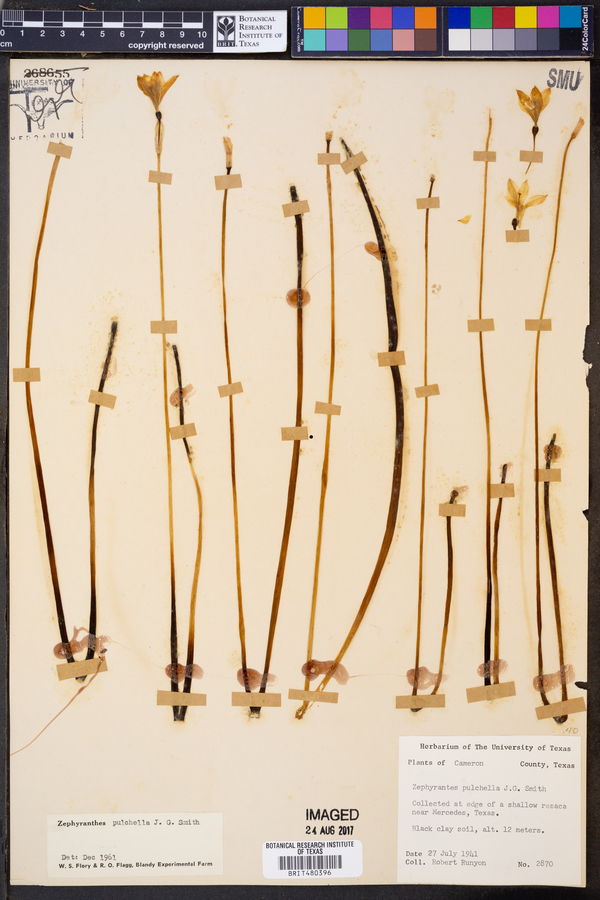Zephyranthes
|
Family: Amaryllidaceae |
In Zephyranthes, the degree of fusion of the perianth into a tube is reflected in flower form, filament length, staminal position, and the opening of the bud. Flowers with much-abbreviated perianth tubes are subrotate; with increasing degrees of perianth fusion, flower form shifts from subrotate to funnelform to salverform. The more the perianth is fused, the shorter the filaments in relative length. The longer the perianth tube, the less the stamens diverge, to the point of fasciculation. The timing of the opening of the bud and the expansion of the flower runs across this morphological spectrum from early morning (shortest tubes) through the day to the evening (longest tubes). The phylogeny of Zephyranthes is not well understood. The species with long perianth tubes and fasciculate stamens are sometimes segregated in the genus Cooperia. While there is considerable diversity within Zephyranthes, splitting the genus into two genera by the degree of fusion of the perianth tube does not fit well with the continuity of the morphological spectrum and with the apparent hybrid origins of species in Texas and Mexico. By and large, species with linear stigmatic lobes bloom mid winter-spring-summer, while those with capitate stigmas bloom summer-fall. Many species with linear stigmatic lobes have leaves over 5 mm wide, but such wide leaves are not known in species with capitate stigmas. Whether there is particular generic significance in differences in stigmatic lobes (linear or capitate) or in filaments (filiform or subulate, and apically acute or blunt) remains to be discovered. The perianth tube as a portion of the perianth, the relative lengths of the filaments and perianth tube, the type of stigma, the spatial relationships of the stamens, and the position of the stigma relative to the anthers are critical characteristics in the separation of species of Zephyranthes. These characteristics, especially the capitate stigma, can be very difficult to determine in herbarium specimens, but reasonable determinations can usually be achieved with strong backlighting and practice. For consistency, almost all measurements given herein are from herbarium specimens. The width of the leaf shrinks in pressing and drying; generally the maximum width of a fresh leaf could be about one and one half that reported here. It has been thought that pedicels are consistently either present or absent in species of Zephyranthes. This is belied by the occurrence of both pedicellate and sessile flowers within each of the three species (Z. atamasca, Z. treatiae, and Z. simpsonii) native to the southeastern United States.
Perianth tubular at base, with 6 broad, curved-ascending or spreading segments; filaments elongate, inserted on the throat of the perianth; corona none; ovary inferior, with numerous ovules in each of the 3 locules; seeds flat; perennial herbs from a coated bulb, with several flat, linear, basal lvs and a hollow scape bearing a single large erect fl on a short peduncle subtended by scarious bracts. 35, warm Amer. Gleason, Henry A. & Cronquist, Arthur J. 1991. Manual of vascular plants of northeastern United States and adjacent Canada. lxxv + 910 pp. ©The New York Botanical Garden. All rights reserved. Used by permission. |

